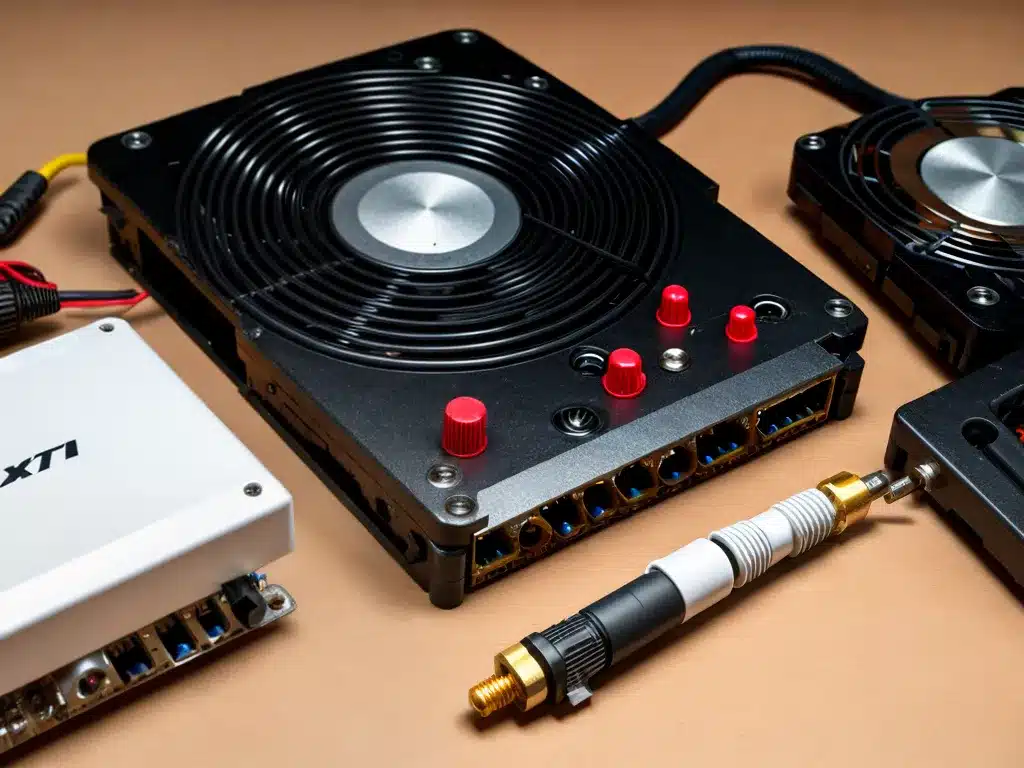
Introduction
Having issues with the audio jack on your phone, tablet, computer, or other device can be extremely frustrating. However, in most cases, fixing faulty audio jacks is possible with a few simple tools and troubleshooting techniques. In this comprehensive guide, I will cover common audio jack problems and solutions in detail so you can get your devices working properly again.
Common Audio Jack Issues
There are several common problems that can occur with 3.5mm audio jacks:
Loose Connection
Over time, the audio jack can become loose inside the device, causing a faulty connection. This results in cutting in and out of audio, or only getting sound through one earbud or channel.
To fix this, I need to open up the device carefully and check the jack connection on the motherboard. Reseating the audio jack cable or securing it with electrical tape often resolves loose connections.
Damaged Jack
Dropping devices or jamming plugs into the jack can physically damage the audio port. Bent or broken jack pins prevent making proper contact with the plug.
Replacing the audio jack module requires soldering skills and getting the correct replacement part. In some cases, the jack is damaged but still salvageable by straightening or adjusting the pins.
Dust and Debris
Pockets lint, dust, and dirt can accumulate in the audio jack over time. This prevents the plug from seating correctly.
Carefully cleaning out the jack with compressed air, a toothpick, or cotton swabs soaked in isopropyl alcohol usually fixes dust and debris issues.
Water Damage
Phones and devices exposed to moisture or submerged in water can short circuit or corrode the audio jack contacts. The jack often needs to be replaced after water damage.
Troubleshooting Steps
To pinpoint the exact problem, I recommend following these audio jack troubleshooting steps:
- Inspect the jack for any visible damage or obstructions
- Try different headphones and cables to isolate the issue
- Test headphones on another device to rule out headphone failure
- Gently clean the jack with compressed air or isopropyl alcohol
- Check for a loose audio jack connection inside the device
- Replace faulty jack modules if damaged or corroded
Repairing Loose Connections
If the audio jack is just loose, reseating the connection can often fix intermittent sound issues:
- Open the device case and locate the audio jack on the motherboard
- Unplug the small jack connector cable carefully
- Check for any damage on the connector pins or socket
- Reinsert the jack cable firmly into the socket
- Secure with electrical tape if needed to prevent loosening again
Be gentle when handling delicate motherboard components. Having the proper tools, like precision screwdrivers and pry tools, helps avoid damage while opening devices.
Replacing a Damaged Audio Jack
For bent, broken, or non-functional audio jacks, replacement is necessary. Here are the steps I take:
1. Purchase the Correct Replacement Part
- Match the original audio jack part number and model
- Buy quality components from reputable suppliers
- Avoid cheap counterfeit parts that may not function well
2. Use Proper Soldering Tools
- A fine tip soldering iron, desoldering wick, flux, etc help remove and install jacks
- Good technique prevents lifting or damaging solder pads
- Pre-tin wires before soldering new connections
3. Detach Old Audio Jack Carefully
- Heat and remove solder joints to free the jack from the board
- Grip and rock the jack gently to remove without ripping pads
- Clear any remaining solder or debris from the socket
4. Install New Audio Jack
- Line up pins correctly with the motherboard socket
- Solder one pin first to anchor the jack before finishing other joints
- Avoid overheating and use minimum solder for clean installation
5. Reassemble Device
- Screw case back together, reconnect cables, test thoroughly
- Make sure all case gaskets and seals are intact
- Confirm audio jack works correctly before closing up
Replacing surface mount jacks takes practice. Consider having a professional handle the repair if I don’t have microsoldering experience.
Preventing Future Audio Jack Damage
To help avoid jack problems down the road:
- Handle devices and plugs carefully to prevent physical damage
- Use compressed air routinely to keep jacks free of pocket lint and debris
- Avoid exposing devices to moisture or submerging in water
- Don’t force plugs into jacks if misaligned or obstructed
- Regularly plug in headphones and rotate jacks to maintain connections
Proper care goes a long way towards preserving the life of delicate audio jacks in phones and electronics. But even well-maintained jacks can suffer normal wear over time. Now you have the key troubleshooting and repair tips to get faulty jacks working again.












